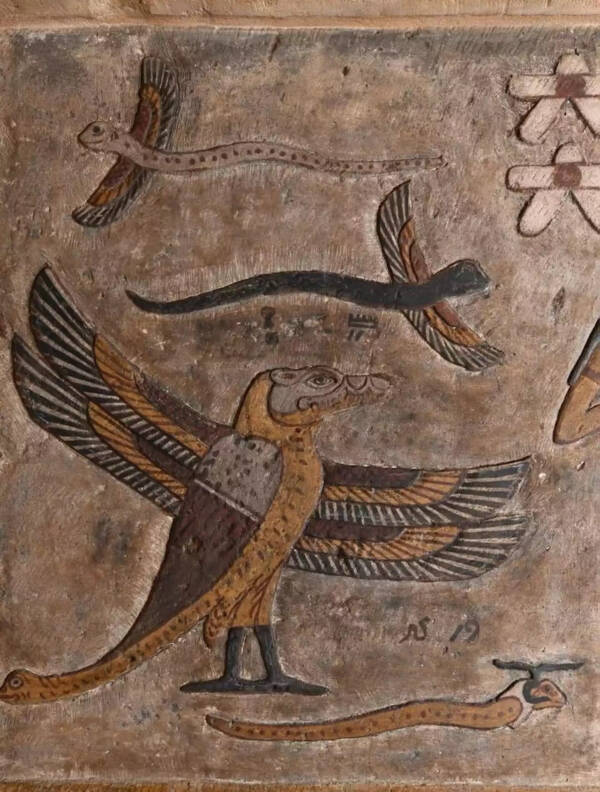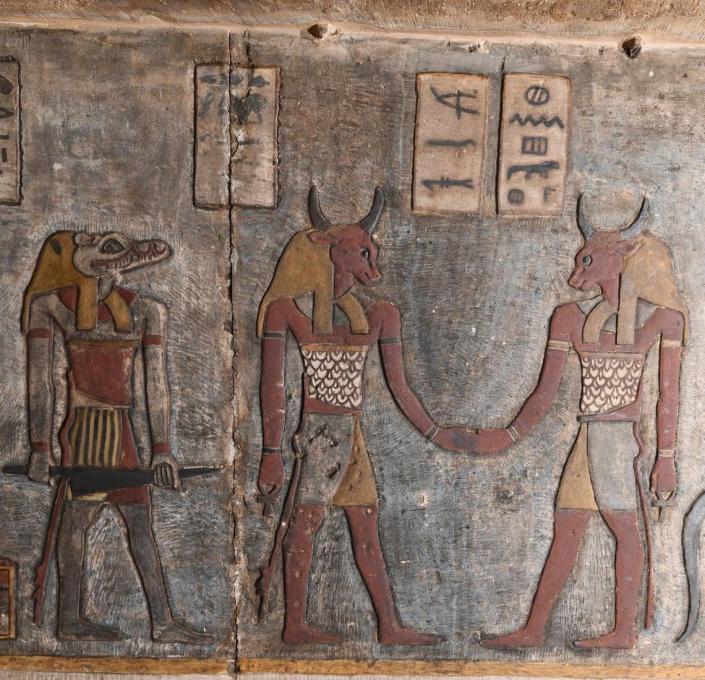The images, executed in relief, include a complete depiction of the signs of the zodiac. Other reliefs show the planets Jupiter, Saturn and Mars.

Ancient Egypt has always carried some surprises for archaeologists around the world. From pyramids to tombs to ancient temples, sculptures, and paintings, they all have some meaning and mystery behind them. Apart from the mural paintings, the walls of ancient Egyptian temples were also covered with wall art paintings, also known as reliefs.
An Egyptian-German research team has uncovered yet another series of colourful ceiling paintings at the Temple of Esna in Upper Egypt that have the complete representation of the zodiac.
However, the images of the 12 zodiac signs are a little bit different from modern zodiac images.
Each sign of the zodiac is completely represented in the relief images. Several stars and constellations that were once used to measure time are depicted in other reliefs, along with the planets Jupiter, Saturn, and Mars.

“Representations of the zodiac are very rare in Egyptian temples,” Professor Christian Leitz of the University of Tubingen says, adding that “the zodiac itself is part of Babylonian astronomy and did not appear in Egypt until Ptolemaic times.”
Researchers think the system of zodiac signs and their related constellations was introduced to Egypt by the Greeks and subsequently became popular.
“The zodiac was used to decorate private tombs and sarcophagi and was of great importance in astrological texts, such as horoscopes found inscribed on pottery sherds,” says Dr. Daniel von Recklinghausen, a Tubingen researcher.

“However, it is rare in temple decoration: Apart from Esna, there are only two completely preserved versions left, both from Dendera,” he says.
In the temple of Esna, the colors had been covered by a layer of dirt and soot – and thus preserved – for nearly 2,000 years. However, the ceiling paintings and inscriptions were barely recognizable for centuries because they were so dirty.
A release by the research institute stated that in addition to the zodiac and the star constellations, the restoration revealed colourful images of snakes, crocodiles, and various fabulous beasts, including a snake with a ram’s head and a bird with a crocodile’s head, the tail of a snake, and four wings.
According to Science Alert, construction of the Temple of Esna, located approximately 60 kilometres (37 miles) south of Luxor, began during the Ptolemaic era, but continued for centuries. All that remains now is the vestibule, or pronaos, which was placed during the Roman Period, under the rule of Emperor Claudius between 41 and 54 CE.








